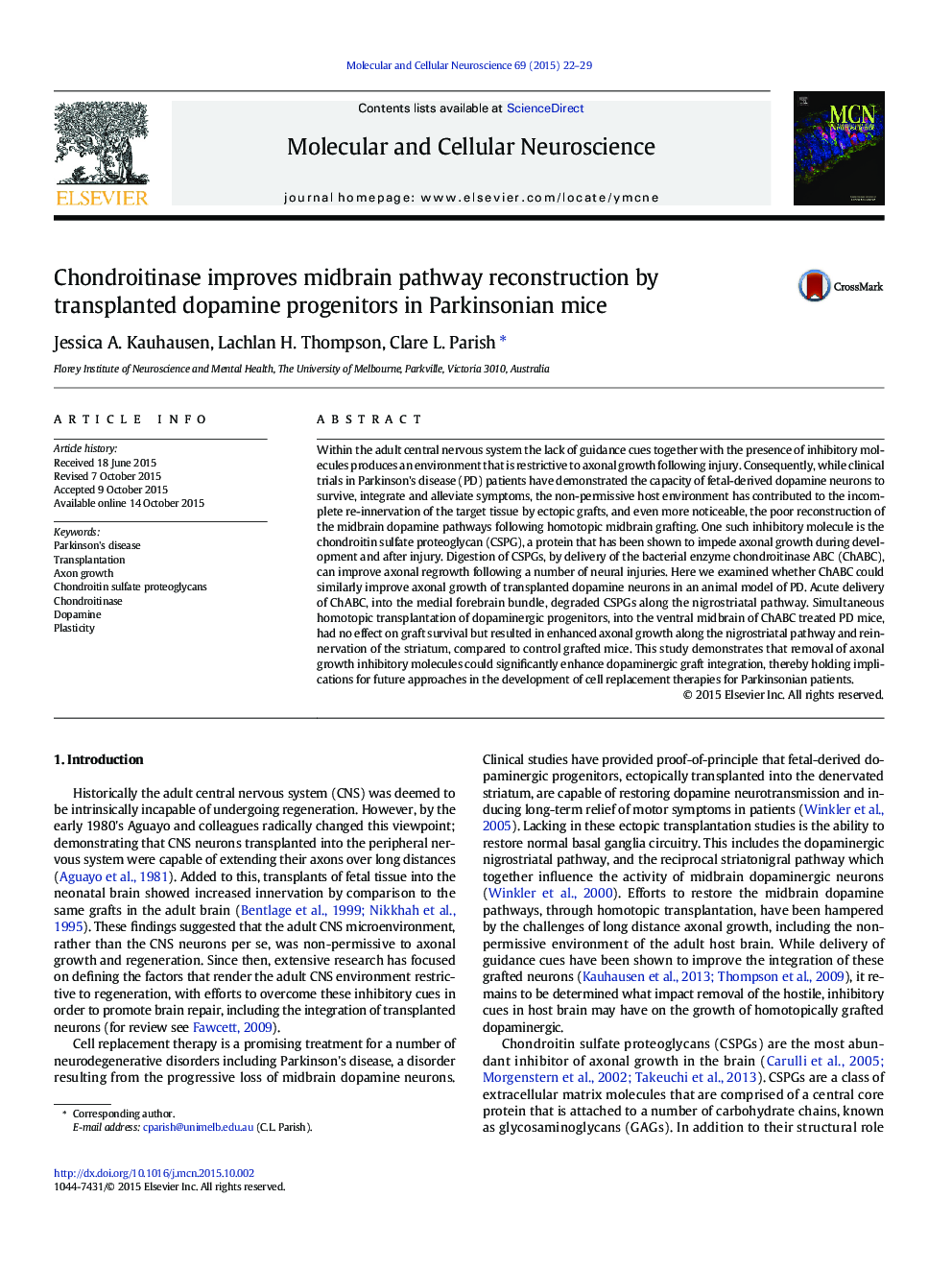| Article ID | Journal | Published Year | Pages | File Type |
|---|---|---|---|---|
| 2198434 | Molecular and Cellular Neuroscience | 2015 | 8 Pages |
Abstract
Within the adult central nervous system the lack of guidance cues together with the presence of inhibitory molecules produces an environment that is restrictive to axonal growth following injury. Consequently, while clinical trials in Parkinson's disease (PD) patients have demonstrated the capacity of fetal-derived dopamine neurons to survive, integrate and alleviate symptoms, the non-permissive host environment has contributed to the incomplete re-innervation of the target tissue by ectopic grafts, and even more noticeable, the poor reconstruction of the midbrain dopamine pathways following homotopic midbrain grafting. One such inhibitory molecule is the chondroitin sulfate proteoglycan (CSPG), a protein that has been shown to impede axonal growth during development and after injury. Digestion of CSPGs, by delivery of the bacterial enzyme chondroitinase ABC (ChABC), can improve axonal regrowth following a number of neural injuries. Here we examined whether ChABC could similarly improve axonal growth of transplanted dopamine neurons in an animal model of PD. Acute delivery of ChABC, into the medial forebrain bundle, degraded CSPGs along the nigrostriatal pathway. Simultaneous homotopic transplantation of dopaminergic progenitors, into the ventral midbrain of ChABC treated PD mice, had no effect on graft survival but resulted in enhanced axonal growth along the nigrostriatal pathway and reinnervation of the striatum, compared to control grafted mice. This study demonstrates that removal of axonal growth inhibitory molecules could significantly enhance dopaminergic graft integration, thereby holding implications for future approaches in the development of cell replacement therapies for Parkinsonian patients.
Keywords
Related Topics
Life Sciences
Biochemistry, Genetics and Molecular Biology
Cell Biology
Authors
Jessica A. Kauhausen, Lachlan H. Thompson, Clare L. Parish,
